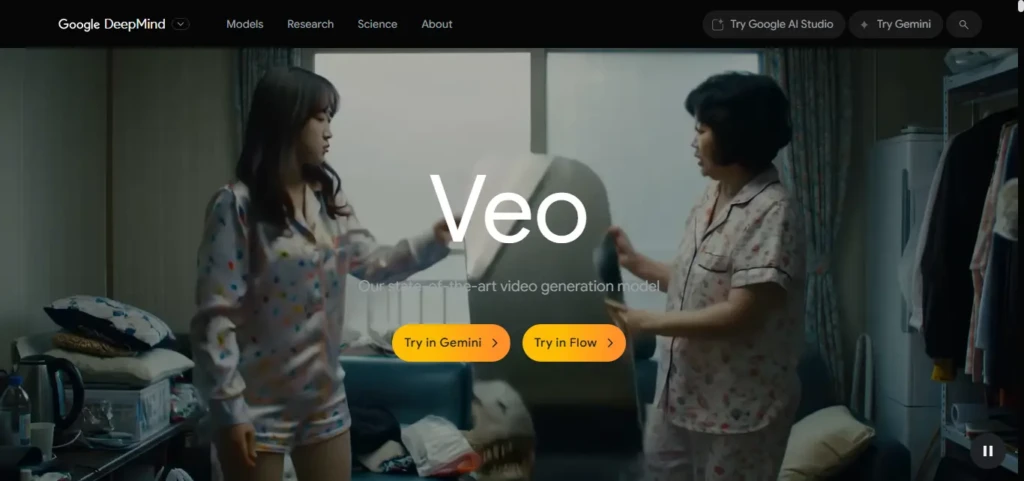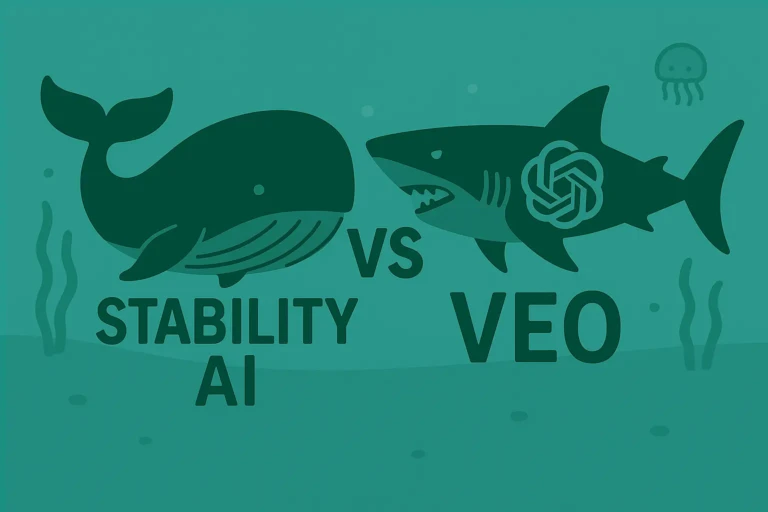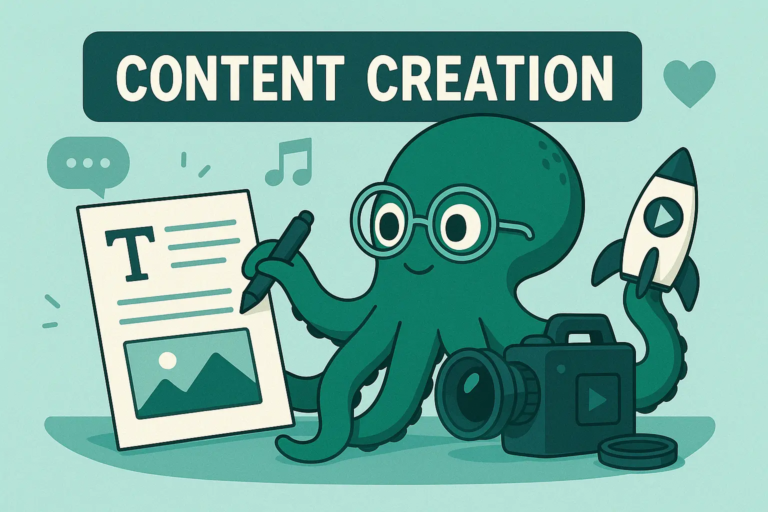Which AI Video Tool Is Best for Filmmakers? Veo vs The Rest
AI video tools aren’t sci-fi anymore.
They’re here—helping filmmakers experiment, test ideas, and save time.
Whether you’re sketching a scene, drafting narrative visuals, or social media content—these tools can amplify your workflow.
But with so many options—Veo, Runway, Pika, and Sora—which one truly fits your filmmaking style?
In this post, we’ll compare them head-to-head—looking at realism, control, speed, and pricing—so you can decide what works best for your next project.
Meet Veo: What Makes Google DeepMind’s AI Stand Out

Veo 3 (DeepMind) is Google’s most advanced text-to-video model.
It produces 4K visuals with realistic physics, ambience, and even native audio—music, effects, and dialogue.
Recent testing shows top-tier scores: 8.9/10 temporal consistency, 9.1/10 anatomy accuracy, and 8.7/10 audio sync.
Veo’s tight integration with tools like Flow and Canva—and upcoming Shorts features—make it accessible for short-form and cinematic work.
How Veo Works (In Simple Terms)
You give Veo a prompt—text, image, or video.
The model leverages years of DeepMind’s video research (Imagen‑Video, Lumiere, etc.) to craft a consistent clip.
With Veo 3, you also get realistic sound that matches visuals—including dialogue and ambient noise .
All videos are watermarked via SynthID to ensure transparency and responsible use.
What Filmmakers Are Saying About It
Early feedback is solid:
Elon Musk praised Veo 3 as “awesome,” highlighting realism and audio sync .
Filmmaker Hashem Al‑Ghaili posted demos on X—audiences couldn’t tell if clips were real or AI.
Veo is quickly earning trust among filmmakers aiming for narrative depth and realistic visuals.
Veo’s Strengths: Where It Shines Most
• Realism & Physics: Scenes like water, fire, or crowds come alive accurately .
• Audio sync: Dialogue, ambience, and effects are aligned natively .
• Cinematic control: 4K output and motion consistency—ideal for narrative visuals .
• Integrated access: Canva, Flow, and Youtube Shorts are adopting Veo 3 soon .
Where Veo Falls Short (Yes, It Has Limits)
• Limited to short clips (8–60s)—not full features.
• Access is restricted: requires Google AI Ultra subscription at $249/month .
• Still a “black box”: creative decisions and data origins often unseen.
The Competition: Overview
Let’s see how Veo stacks up against other filmmakers’ favorites—Runway, Pika, and Sora.
Runway ML
Runway (aside from long history in VFX) delivers Gen‑2 through Gen‑4 with strong motion editing tools.
Tom’s Guide highlights its cinematic quality and dynamic camera control—even used in top films and TV.
Elaborate workflows, VFX apps, and an evolving toolkit make it a long-term favorite.
Pika Labs
Pika Labs focuses on flexibility and control from text/image inputs.
Per comparisons, Pika excels on custom prompts—even image-based—while Runway leads in cinematic polish .
It’s ideal when creatives want image-to-video experimentation without complexity.
Sora by OpenAI
Sora is OpenAI’s entry into text-to-video, trained for world simulation and physical realism.
It produces cinematic visuals, though still in limited public beta, with a focus on research and ready to scale .
Who Should Use What
• Go with Veo if you need short, cinematic clips with audio and don’t mind the cost/subscription.
• Pick Runway for advanced editing, layered VFX, and longer sequences.
• Use Pika when you want prompt-level control and flexible experimentation.
• Try Sora if you’re in beta, like OpenAI tools, and want world-simulation style clips.
How to Choose the Right Tool for Your Project
1. Start with your goal: narrative scene vs UI demo vs teaser
2. Decide on clip length + audio needs
3. Identify your control level preference—deep editing or simple prompts
4. Match it to your budget and access
5. Pilot one platform with your own prompt
That quick test tells you where your creative workflow fits best.
Wrap-Up: Is Veo Really the Best Pick?
Veo 3 is a major leap: cinematic visuals + native audio under one platform.
But it’s just one tool in the kit.
Choose Veo for audio-rich, polished clips.
Use Runway for layered editing.
Pick Pika when control and flexibility matter.
Try Sora if you want OpenAI’s style.
AI video tools aren’t one-size-fits-all — but now, you’ve got the guide to pick what works for your filmmaking.
Try This Prompt Now
Test-run it yourself:
“Create a 10‑second cinematic scene: A lone astronaut walking through a dusty red planet, soft ambient wind, distant metallic drone hum. Generate visuals with audio.”Run it through Veo, Runway, Pika, or Sora.
See what each tool prioritizes.
Then choose the style that fits your story.







